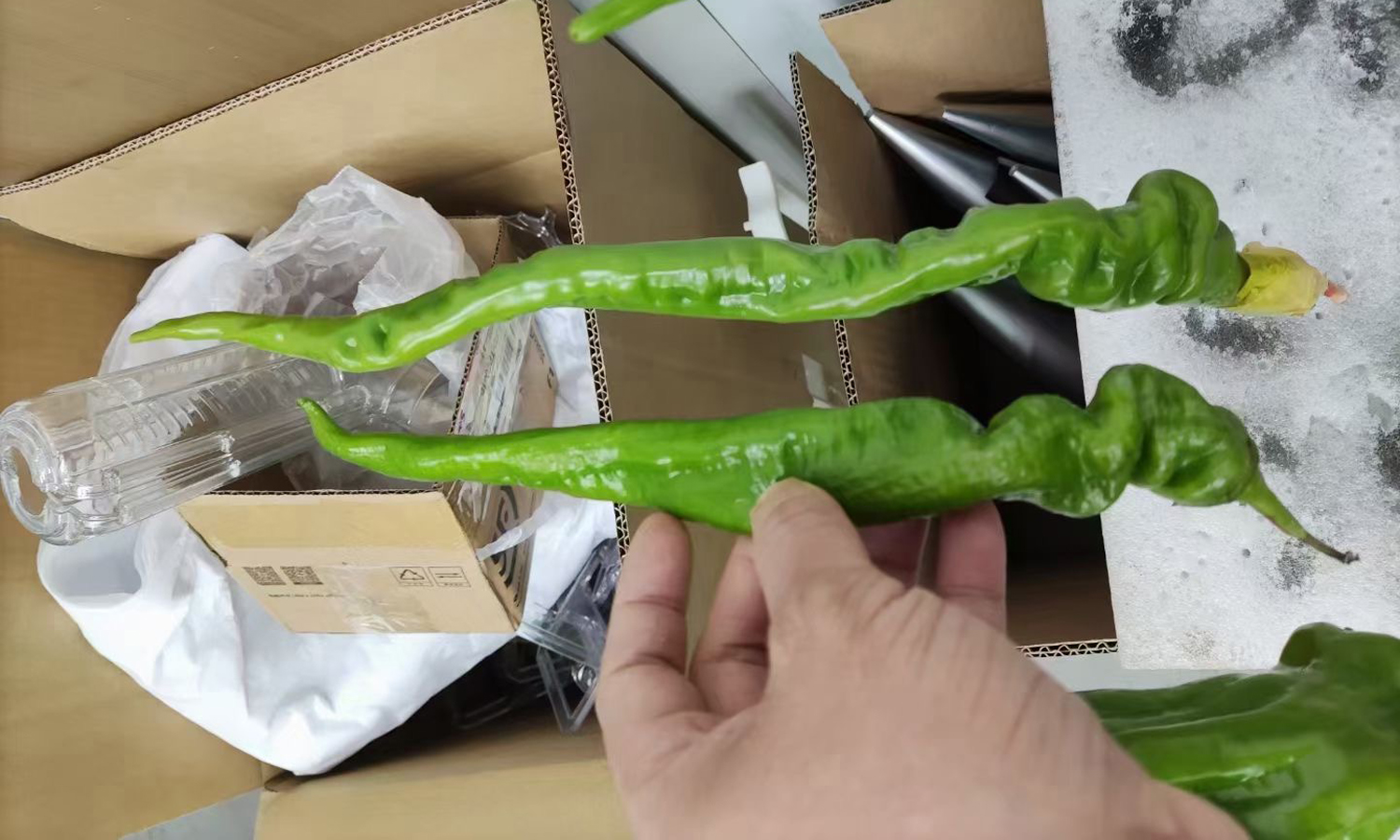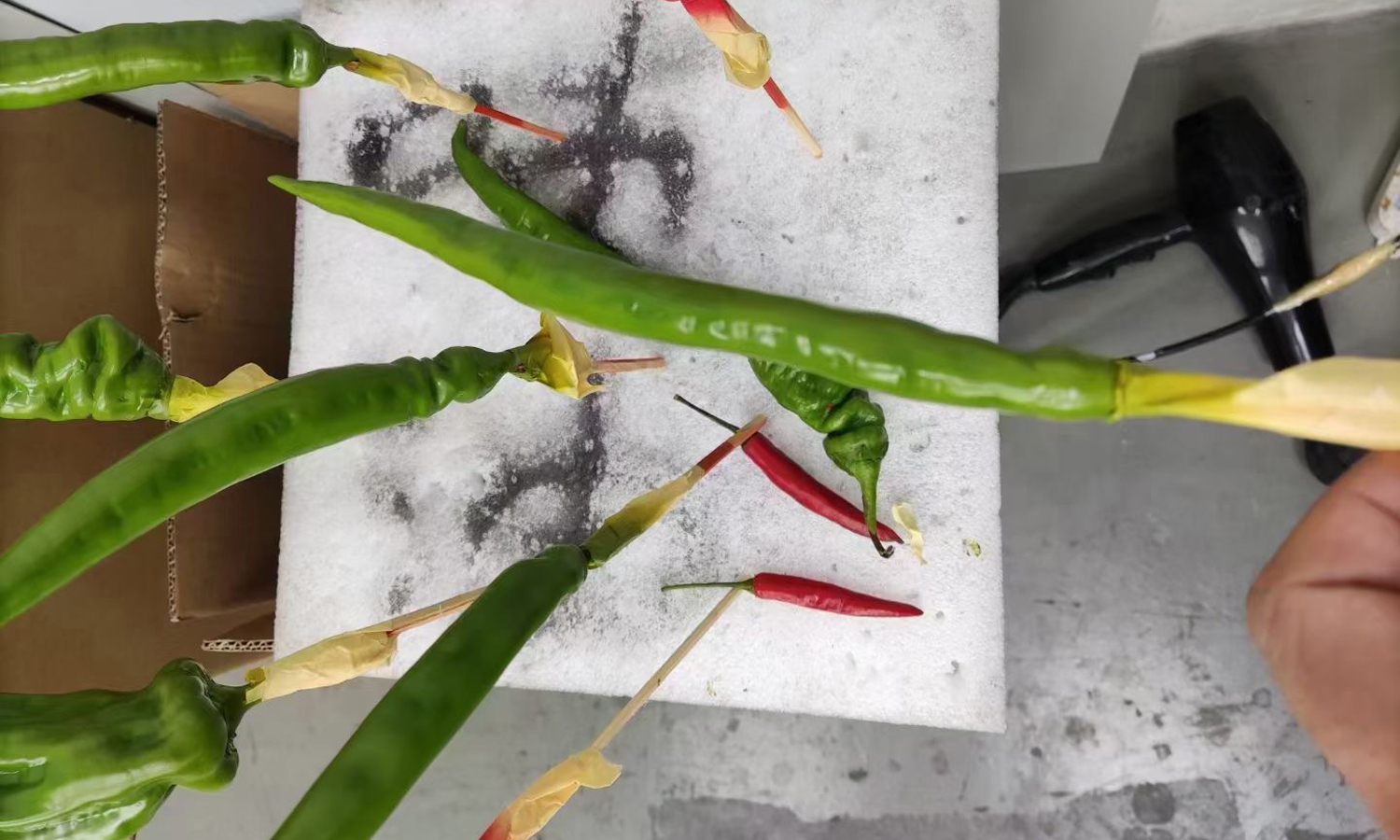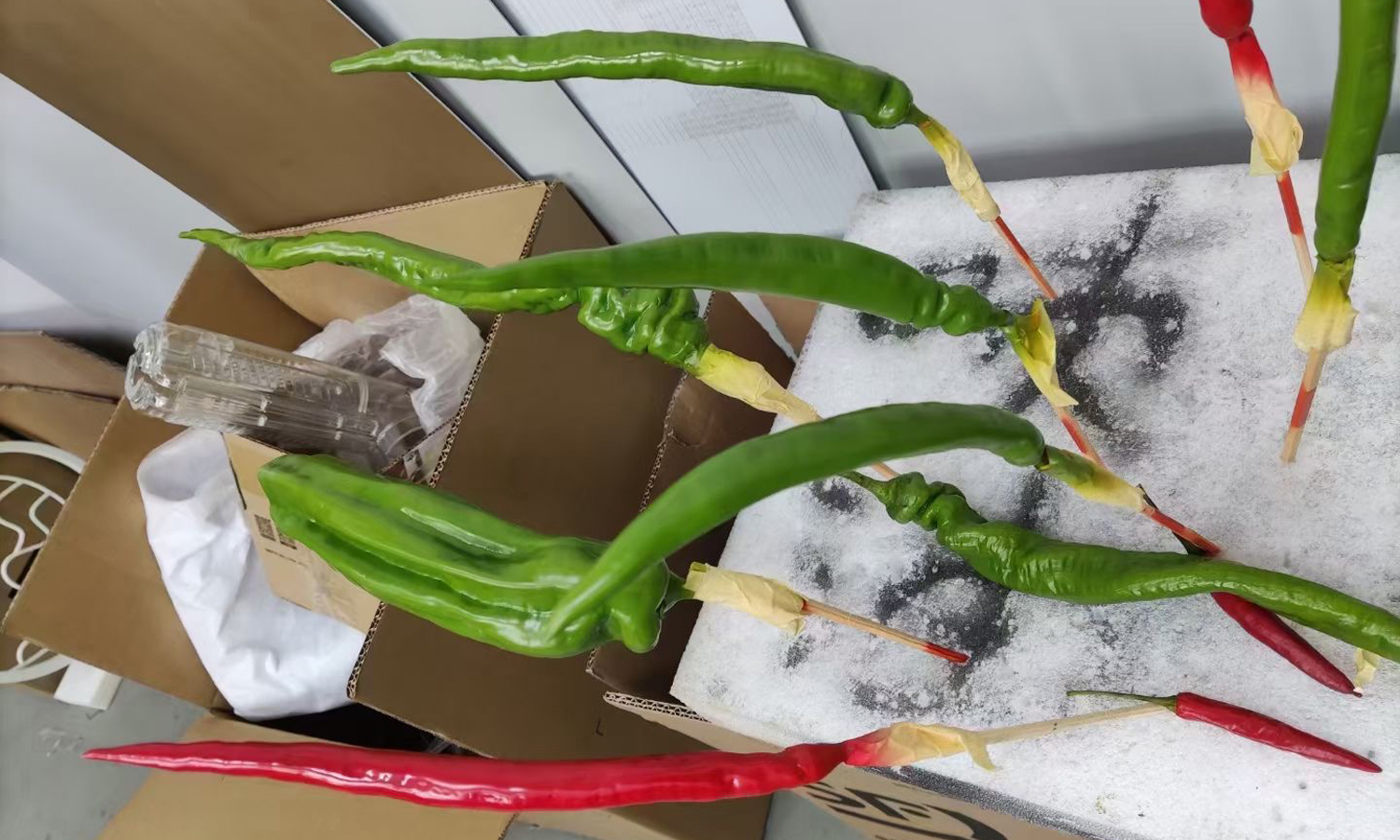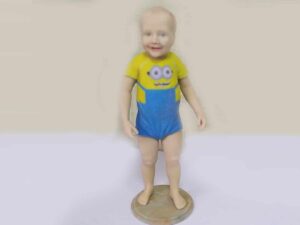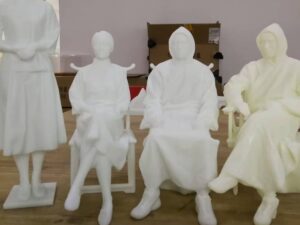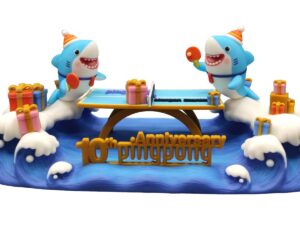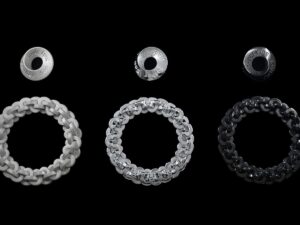SLA 3D Printed Full-scale Resin Pepper Fake Food Models
- FDM 3D Printed High Voltage Cable Stripper Made With Nylon 6
- SLA 3D Printed and Painted Screaming Marmot Resin Statue
Posted on 2021-06-01 in Art бЇ Х┴╨Ф°╞
Process 3D Print, Support Removal, Post Curing, Polish, Paint
Material Resin
Quantity 10 pcs
Price Range $1-100
Lead Time 2 workdays
Material Resin
Quantity 10 pcs
Price Range $1-100
Lead Time 2 workdays
Gallery
About Project
Fake food models are commonly used in restaurant street displays to represent the dishes available inside. It’s easier to make a highly similar model than try to antisepticize the real food. It’s really hard to tell the difference between real peppers and the high simulation resin models unless you touch them!
Solution
- Step 1: The key factors of making realistic fake foods are 3D modeling and painting. The designer buys some real peppers from the market and builds the models with great patience. We can also scan the real food and repair the 3D scans. But it’s unnecessary for such simple objects.
- Step 2: We hollow the model to a wall thickness of 2mm, which is enough for daily presentation in the windows. After the client is sure about size, material, and desired surface, we feed the STL file into slicer software.
- Step 3: 3D print the full-scale pepper models together with the necessary supports using SLA Generic Resin. Post-process them by washing with IPA, cutting off the supports, and air-drying. Then spray with putty, paint using airbrushes and specially picked colors. Finally, spray with UV oil.
